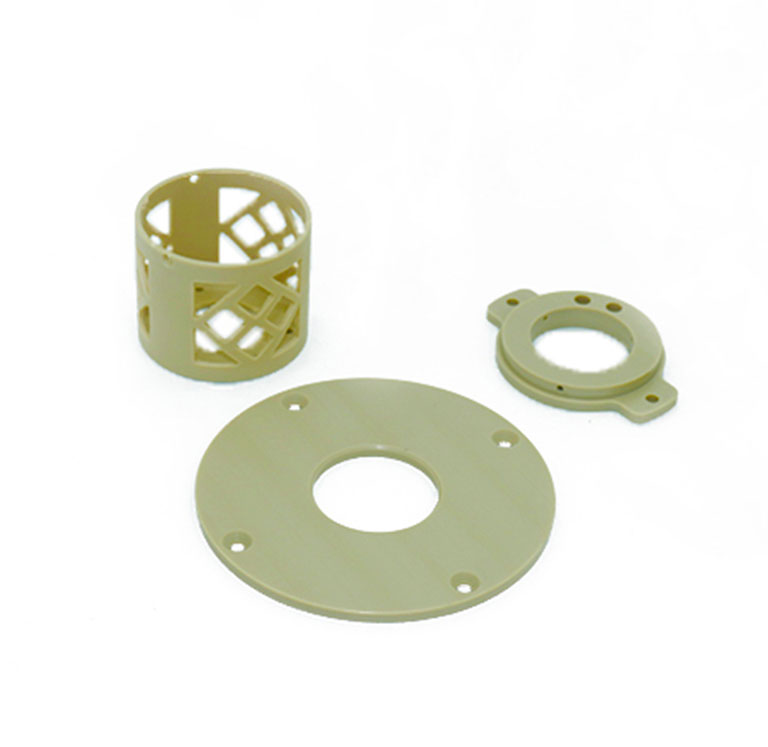PEEK resin was first applied in the field of Astronautics, replacing aluminum and other metal materials to manufacture various aircraft parts. Due to the good friction resistance and mechanical properties of PEEK resin in automobile industry, as the raw material for manufacturing the engine hood, the bearings, gaskets, seals, clutch gear rings and other components made of PEEK resin are widely used in the transmission, braking and air conditioning systems of automobiles. Then what should you consider when moulding PEEK? Read this article and take a look at 5 factors in PEEK injection molding process that can help to avoid the need for troubleshooting when moulding PEEK.

Injection Molding PEEK – 5 Things To Consider When Moulding PEEK
1.Standard molding equipment can be used for PEEK injection molding
Peek can be molded on standard injection molding machines provided by most well-known machine suppliers. According to the peek brand you want to shape, the processing temperature of the barrel of the injection molding machine will be between 350-400 ⁰ C. Most of the standard injection molding machines can reach the above temperature without any modification. If necessary, the heating ring or thermocouple controller of injection system need to be improved. You can consider using heat-resistant insulation material to insulate the barrel, so as to save energy cost. Universal screw is suitable for peek injection molding. Copper and copper alloy materials (in contact with melts) should be avoided. All metal parts shall be smooth and highly polished, so as to avoid material degradation due to long time stay in the local part of the barrel.
2.Keep the process clean
Any contamination should be avoided when dealing with peek. Most other polymers degrade at PEEK injection mold processing temperature, so clean ovens and feed systems must be used. Before starting the injection molding PEEK, it is necessary to clean the screw rod and barrel correctly and effectively to ensure that the equipment is clean and tidy without other material residues.
Recycling may be the main source of pollution. We suggest that you use special equipment and do a good job in cleaning it to ensure that peek materials are not polluted by other materials in its operation. Keep in mind that any contamination inadvertently involved in the entire injection process can cause black spots in the final peek injection parts.
3.Dry PEEK Polymer before molding process
PEEK pellets should normally be dry, but can absorb moisture in the atmosphere. You can place the pellets on the tray in a conventional oven and dry them for 2-3 hours at 150-160 ℃, with the option of continuous drying. The aim is to reduce the residual water content to < 0.02%. Dehumidification or hot air dryers may also be used and must be capable of maintaining a dew point or saturation temperature of – 40 ° C.
4.Control the mold temperature
Good temperature control of the mold is very important to obtain semi crystalline workpieces which can make full use of PEEK’s unique properties.
5.Use big gates to better fill your mold and pack out component
The gate size depends on the maximum wall thickness of the part, the number of cavities and the part geometry. PEEK is a semi crystalline polymer with higher shrinkage than amorphous thermoplastic. In addition, higher processing temperature cooling gradient is easier to cause greater shrinkage than lower temperature processing polymers. Use big gates as much as possible to achieve better feeding effect. In wiggs, there is a general rule that the gate is the 2/3 thickness rule of the maximum section thickness of the injection module. According to the PEEK brand you want to shape, the minimum value of the gate without PEEK filling is 1mm, and the minimum value of the gate with PEEK reinforcement filling is 2mm. The general gate design of injection parts is applicable to PEEK injection products. It can be considered that the submerged gate can be used in the design of thin-walled or small part products, but it is not suitable for injection molding of parts with large wall thickness, because it is easy to freeze the gate in advance, thus affecting the subsequent feeding effect of thick wall products.
